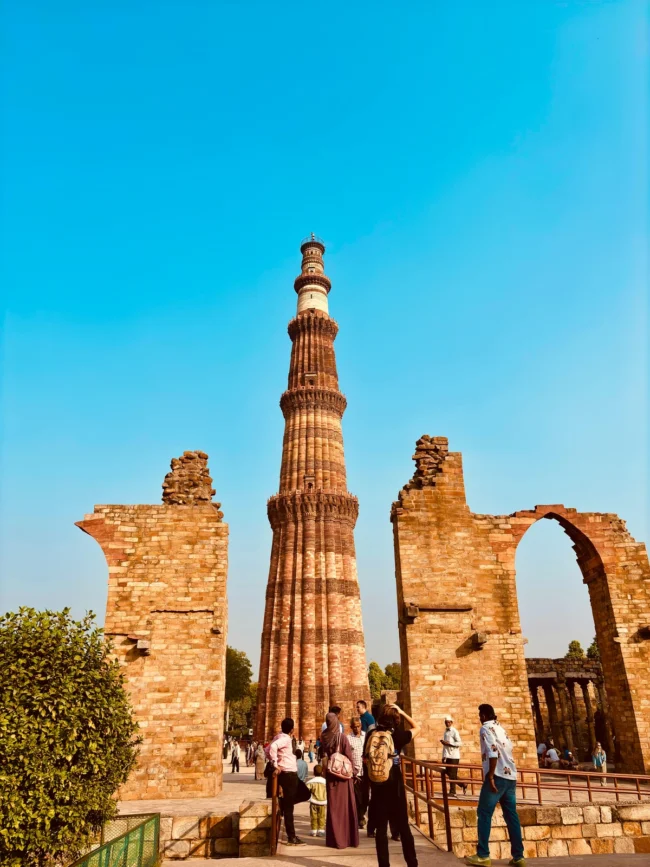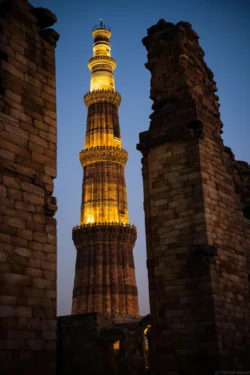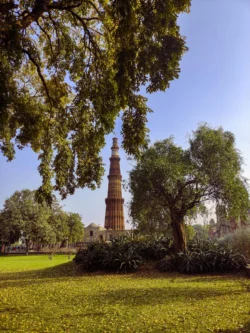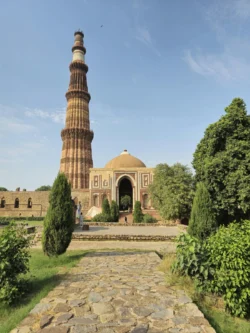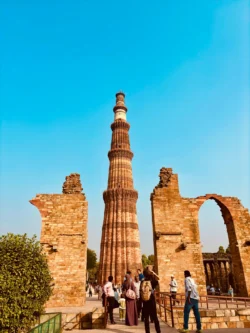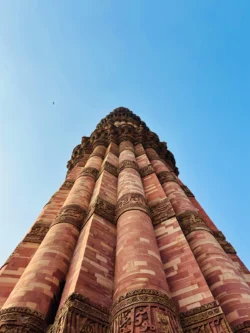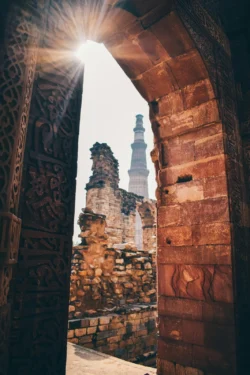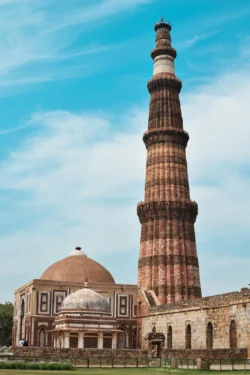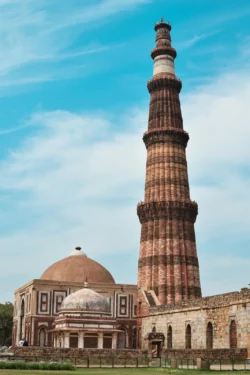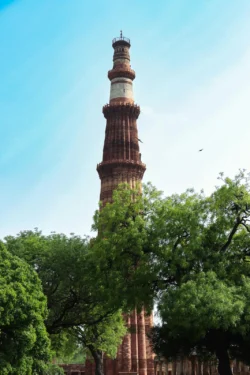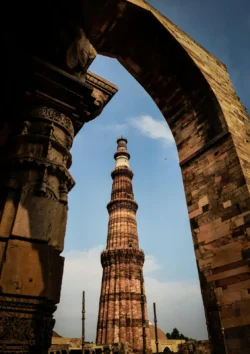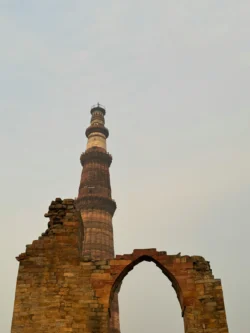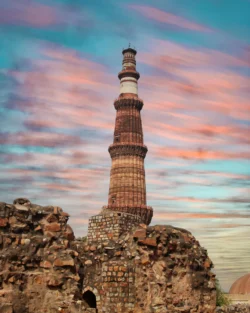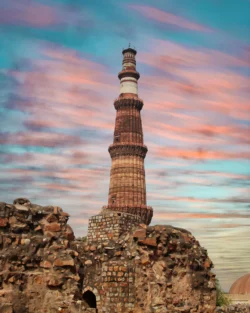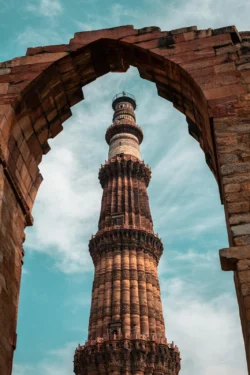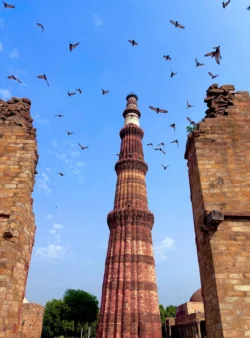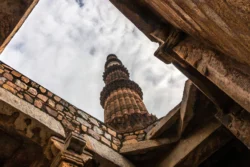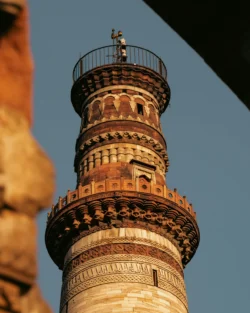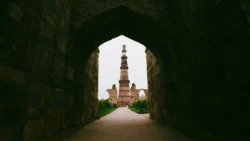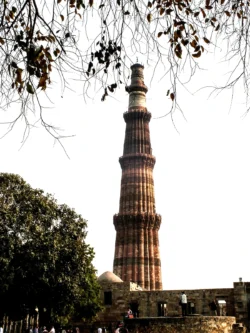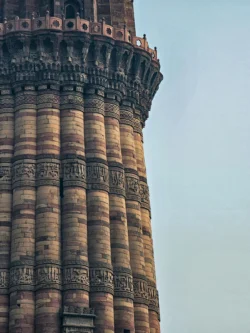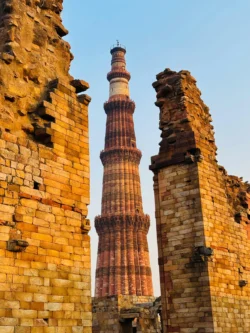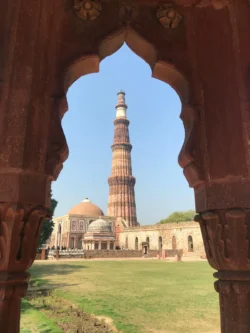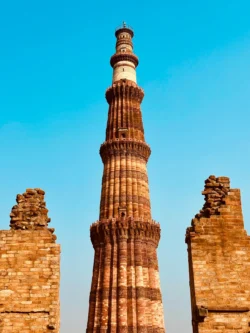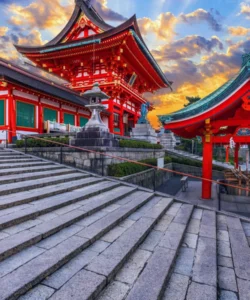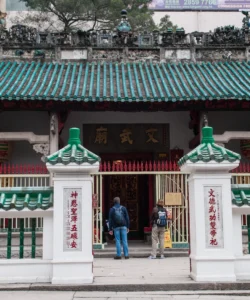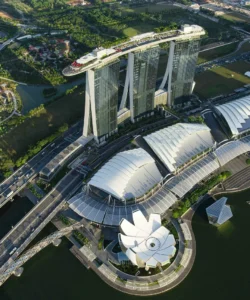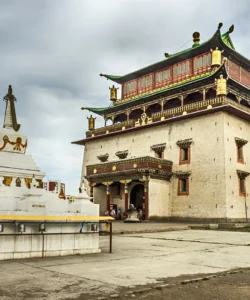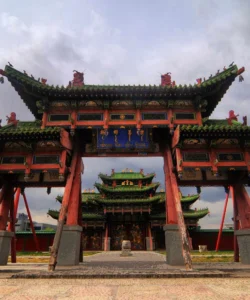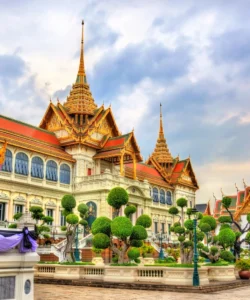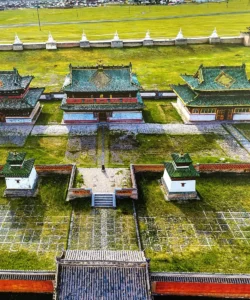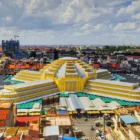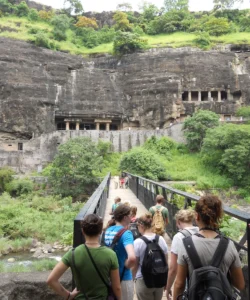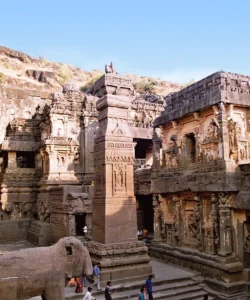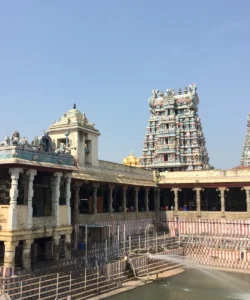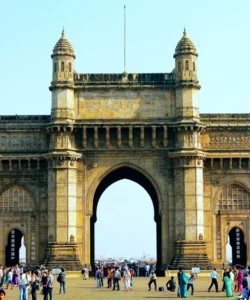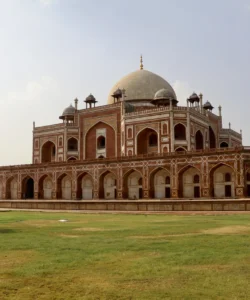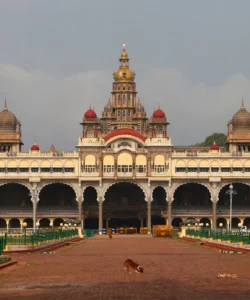The Qutub Minar, a towering minaret located in the Mehrauli area of South Delhi, India, is a remarkable example of early Indo-Islamic architecture. Commissioned in the late 12th century, it stands as a symbol of victory and the dawn of Muslim rule in India, surrounded by a complex of historically significant monuments.
Name: Qutub Minar (also spelled Qutb Minar or Qutab Minar)
Address: Mehrauli, New Delhi, Delhi 110030, India.
It is located in the southern part of Delhi, within the Qutub Complex, which is a UNESCO World Heritage Site.
How to Get There:
The Qutub Minar is a major tourist attraction and is well-connected within Delhi’s extensive transport network:
- By Metro (Recommended): The most convenient way. Take the Delhi Metro’s Yellow Line directly to Qutub Minar Metro Station. From the station, it’s a short auto-rickshaw ride or a pleasant 15-20 minute walk to the complex entrance.
- By Auto-rickshaw/Cycle-rickshaw/E-rickshaw: Easily available throughout Delhi and can drop you off at the complex entrance.
- By Bus: Numerous DTC (Delhi Transport Corporation) bus routes serve the Qutub Minar area.
- By Taxi/Ride-Sharing (Uber/Ola): Convenient for direct travel from any part of Delhi.
- From Indira Gandhi International Airport (DEL): Approximately 15-20 km, taking about 30-45 minutes by taxi or via the Airport Express Metro to New Delhi Railway Station, then onward via Yellow Line.
- Entrance Tickets: Tickets can be purchased online (recommended for faster entry) or at the ticket counters. Separate fees apply for Indian citizens/SAARC/BIMSTEC nationals and other foreign visitors.
- Opening Hours: The Qutub Complex is generally open from sunrise to 8:00 PM daily.
Landscape and Architecture:
The Qutub Minar complex showcases a unique blend of Hindu and Islamic architectural styles, reflecting the cultural synthesis that occurred with the advent of Muslim rule in India.
- The Qutub Minar: The central and most prominent structure is the 72.5-meter (238-foot) tall minaret, making it the tallest brick minaret in the world. It tapers from a diameter of 14.3 meters at its base to just 2.75 meters at the top.
- Five Storeys: It has five distinct storeys, each marked by a projecting balcony supported by intricate stone brackets, often decorated with a “honey-comb” design.
- Material and Decoration: The lowest three tiers are made of alternating red and buff sandstone, while the fourth and fifth tiers are made of marble and sandstone. The tower is extensively adorned with bands of richly carved inscriptions in Arabic and Nagari characters, primarily verses from the Quran and eulogies, reflecting both religious devotion and political authority.
- Fluted Design: The minaret’s shaft is fluted (grooved), with alternating angular and rounded flutings in its lower stories, contributing to its distinct visual appeal.
- Quwwat-ul-Islam Mosque: Located to the northeast of the Minar, this is the earliest extant mosque built by the Delhi Sultans, constructed by Qutb al-Din Aibak in 1199 AD. It is famous for being largely built from the remains of 27 demolished Hindu and Jain temples. You can clearly see Hindu and Jain architectural members (columns, carvings) reused in its cloisters and courtyard, creating a fascinating, albeit controversial, fusion.
- Iron Pillar of Delhi: Within the courtyard of the Quwwat-ul-Islam Mosque stands a remarkable Iron Pillar, dating back to roughly 400 AD (during the Gupta period). This 7-meter (23-foot) high pillar is famous for its rust-resistant composition, a testament to ancient Indian metallurgical skill, and bears a Sanskrit inscription dedicated to Vishnu.
- Ala’i Darwaza: The southern gateway to the Quwwat-ul-Islam mosque, built by Alauddin Khalji in 1311 AD. It is considered a masterpiece of early Islamic architecture in India, notable for its true arches (unlike the corbelled arches of earlier structures) and elegant geometric and floral ornamentation in red sandstone and white marble.
- Tomb of Iltutmish: The tomb of Qutb al-Din Aibak’s successor, Iltutmish, built in 1235 AD. It is a plain square chamber of red sandstone, profusely carved with Islamic inscriptions, geometrical patterns, and some Hindu motifs on its interior.
- Ala’i Minar: An incomplete tower to the north of the Qutub Minar, commenced by Alauddin Khalji, who intended to build a minaret twice the size of Qutub Minar. Only its first storey (25 meters) was completed, providing a fascinating glimpse of unfulfilled ambition.
- Gardens and Pathways: The complex is well-maintained with green lawns and paved pathways, allowing visitors to explore the various monuments.
What Makes It Famous:
- UNESCO World Heritage Site: Designated a UNESCO World Heritage Site in 1993, the Qutub Complex is recognized for its outstanding architectural and historical significance, representing the earliest examples of Indo-Islamic architecture.
- Tallest Brick Minaret in the World: The Qutub Minar stands as the highest brick minaret globally, a testament to the engineering and architectural prowess of its builders.
- Symbol of Islamic Rule in India: Its construction marked the beginning of Islamic rule in India, serving as both a victory tower commemorating the defeat of the last Hindu ruler of Delhi and a minaret for the adjacent mosque.
- Fusion of Architectural Styles: The complex famously showcases the earliest and finest example of the fusion or synthesis of Hindu and Muslim traditions in architecture, materials, and decorative elements. The reuse of Hindu and Jain temple fragments in the Quwwat-ul-Islam Mosque is a striking example of this blend.
- Historical Narrative through Inscriptions: The numerous inscriptions on the Minar and other structures provide valuable historical records, revealing the story of its construction, repairs, and the rulers involved.
- Iron Pillar’s Mystery: The ancient rust-resistant Iron Pillar in the complex is an enduring mystery and a testament to advanced ancient Indian metallurgy.
- Evolution of Islamic Architecture: The different phases of construction by various rulers (Qutb al-Din Aibak, Iltutmish, Firuz Shah Tughlaq, Sikandar Lodi, Robert Smith) are visible in the distinct architectural elements and materials used in its different tiers, illustrating the evolution of Islamic design in India over centuries.
Differences from Some Other Wonders:
- Minaret as a Primary Monument: While many Islamic sites have minarets (e.g., the Red Fort in Delhi has smaller ones, the Great Mosque of Samarra has a Spiral Minaret), Qutub Minar’s fame is almost singularly tied to its massive scale and intricate design as a standalone victory tower and minaret, rather than being just one component of a larger active mosque.
- Earliest Example of Indo-Islamic Fusion: Compared to later, more fully developed Mughal architecture (like the Taj Mahal or Red Fort), the Qutub Complex uniquely represents the earliest stages of Indo-Islamic architectural synthesis, where the two styles were still visibly merging, sometimes jarringly (e.g., the reused temple columns).
- Combined Symbolic Purpose: It served a dual purpose as a victory tower (commemorating the establishment of Muslim rule) and a minaret (for the call to prayer), combining political and religious symbolism in one monumental structure.
- Historical Layering from Multiple Rulers: Its construction spanned several centuries and involved multiple rulers, with each adding their own distinct architectural layer, resulting in visible changes in material and style from one tier to the next, a “timeline in stone.”
- No Interior Access (Currently): While historically accessible, the interior of the Qutub Minar is no longer open to the public due to a stampede incident in 1981, meaning visitors primarily experience it from the outside and within the complex. This contrasts with structures like the Taj Mahal where the mausoleum interior is visited.
- Iron Pillar as a Unique Co-Star: The presence of the much older and mysterious Iron Pillar within the complex adds a unique pre-Islamic Indian element that is unparalleled in other Islamic architectural sites.
Qutub Minar Photos:
